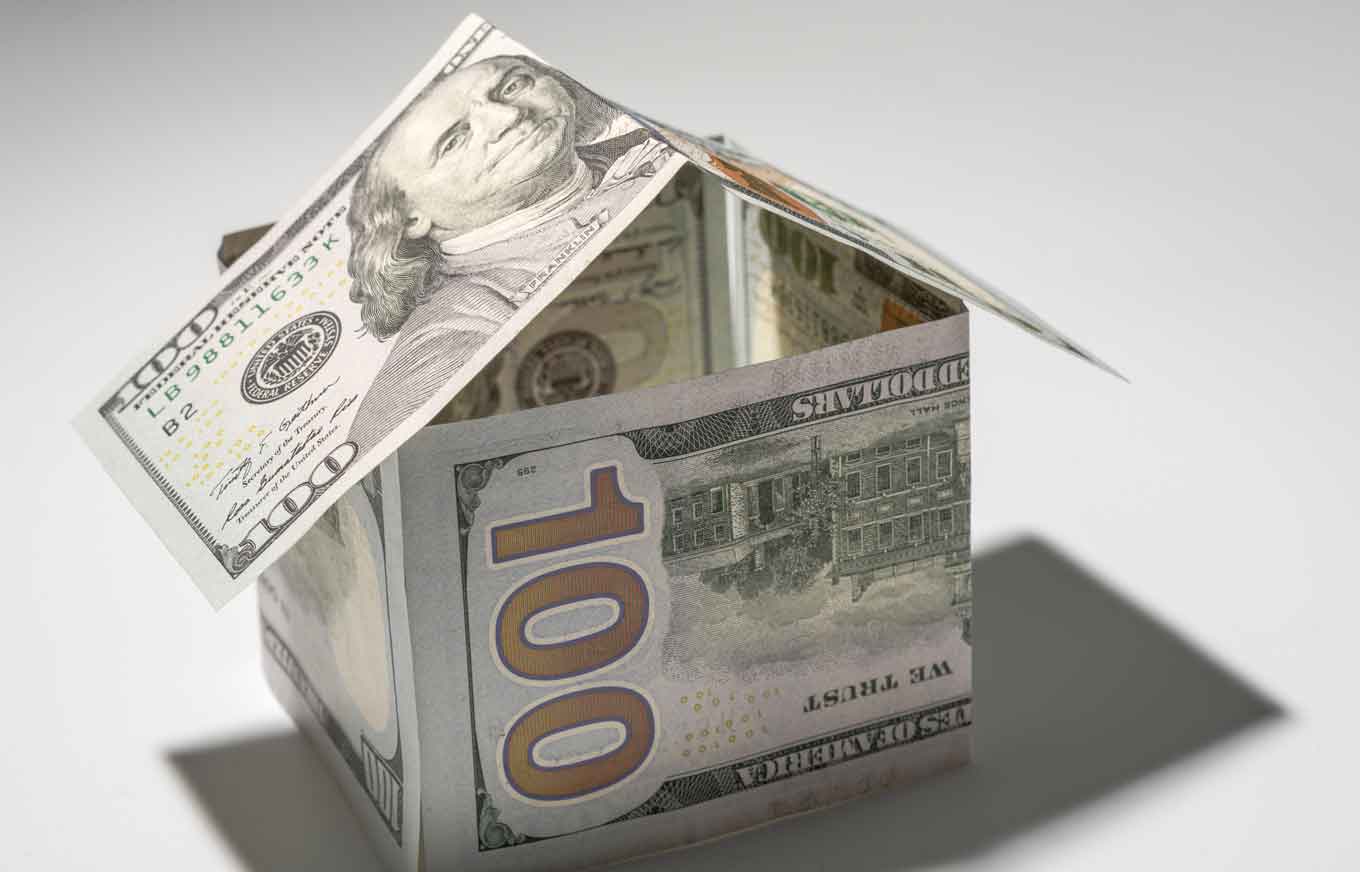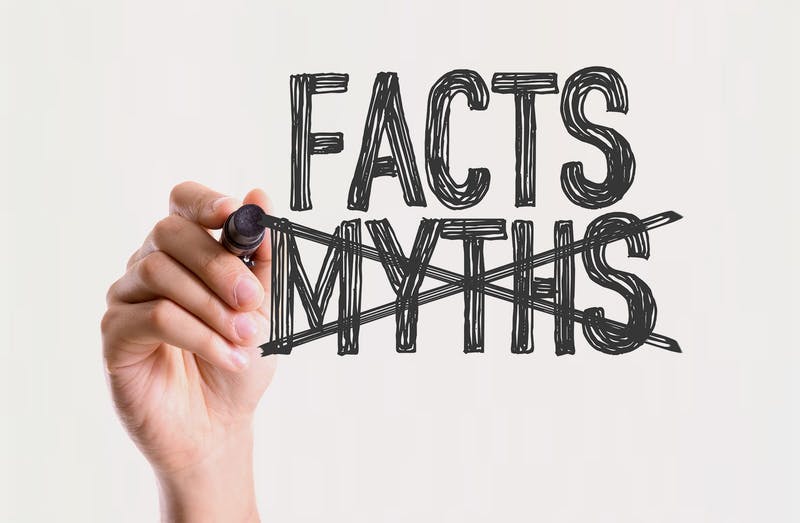
The Complete Guide to FHA Bankruptcy Waiting Periods
Table of Contents
Understanding FHA Loans and Bankruptcy Considerations
Federal Housing Administration (FHA) loans represent a valuable pathway to homeownership for many Americans, particularly those recovering from financial setbacks such as bankruptcy. These government-backed loans offer several advantages, including lower down payment requirements (as little as 3.5%), more flexible credit score requirements, and importantly for those with bankruptcy history, more lenient waiting periods compared to conventional loans.
The FHA, operating under the Department of Housing and Urban Development (HUD), established these loans specifically to make homeownership more accessible. While bankruptcy can significantly impact your ability to qualify for mortgage financing, FHA guidelines recognize that financial hardships happen and provide clear pathways back to homeownership.
It’s important to understand that FHA loans don’t come directly from the government—they’re issued by FHA-approved lenders and insured by the FHA. This insurance reduces the risk to lenders, allowing them to offer more favorable terms to borrowers with challenged credit histories. For individuals navigating the post-bankruptcy landscape, this federal insurance is what makes earlier homeownership possible compared to conventional loan options.
The FHA’s approach to bankruptcy reflects its mission to promote stable homeownership. Rather than permanently excluding bankruptcy filers from the housing market, FHA guidelines establish specific waiting periods and requirements that, once met, allow borrowers to qualify for new mortgage financing. These guidelines carefully balance protecting lenders against undue risk while providing genuine second chances to borrowers who have demonstrated financial recovery.
For potential homebuyers with bankruptcy in their past, understanding these waiting periods is crucial for effective financial planning. Knowing exactly when you’ll become eligible for an FHA loan allows you to time your credit rebuilding efforts, savings plans, and housing search appropriately.
Chapter 7 Bankruptcy Waiting Periods for FHA Loans
Chapter 7 bankruptcy, often called “liquidation bankruptcy,” involves the discharge of most unsecured debts without a repayment plan. For FHA loan purposes, this type of bankruptcy requires a more substantial waiting period than Chapter 13, reflecting the different nature of these bankruptcy processes.
Chapter 13 Bankruptcy Waiting Periods for FHA Loans
Chapter 13 bankruptcy involves a structured repayment plan that allows individuals to pay back a portion of their debts over 3-5 years. The FHA treats Chapter 13 bankruptcies more favorably than Chapter 7, recognizing the commitment to repayment that Chapter 13 represents.
Exceptions to Standard Waiting Periods: Extenuating Circumstances
The FHA recognizes that some bankruptcies result from exceptional situations beyond a borrower’s control rather than from financial mismanagement. In these cases, the standard waiting periods may be reduced through the “extenuating circumstances” provision.
Documentation Requirements After Bankruptcy
Proper documentation is crucial for FHA loan approval after bankruptcy. Your application will face heightened scrutiny, and providing comprehensive documentation helps demonstrate your financial recovery and readiness for homeownership.
Rebuilding Credit During the Waiting Period
The time between bankruptcy and FHA loan eligibility presents a critical opportunity to rebuild your credit profile. Strategic credit rebuilding during this period not only helps you qualify once the waiting period ends but may also secure you better interest rates and loan terms.
The FHA Loan Application Process Post-Bankruptcy
Navigating the FHA loan application process after bankruptcy requires careful preparation and understanding of the additional scrutiny your application will face. Following this systematic approach can help streamline the process and improve your chances of approval.
Comparing FHA to Other Loan Programs’ Bankruptcy Guidelines
Understanding how FHA bankruptcy waiting periods compare to other loan programs helps you determine the best path to homeownership after bankruptcy. Each loan type has distinct requirements, advantages, and limitations.
Special Considerations for Multiple Bankruptcy Filings
Individuals with multiple bankruptcy filings face more stringent requirements when applying for FHA loans.
Standard Waiting Period: Two Years
The standard FHA waiting period after a Chapter 7 bankruptcy discharge is two years. This waiting period begins on the discharge date, not the filing date. The discharge date is the date the court officially releases you from your eligible debts, which typically occurs approximately 4-6 months after filing.
This two-year timeframe represents the FHA’s determination of how long it typically takes for a borrower to demonstrate financial recovery and stability after a complete discharge of debts. During this period, borrowers are expected to reestablish good credit, demonstrate responsible financial management, and establish a track record of stability.
Key Timeline Considerations
When calculating your eligibility date for an FHA loan after Chapter 7 bankruptcy, keep these important points in mind:
- The waiting period starts at discharge, not filing
- You’ll need your official bankruptcy discharge papers to verify dates
- The discharge date appears on the official court document titled “Discharge of Debtor”
- Dismissed Chapter 7 cases (those not completed) may have different requirements
Documentation Required During Application
When applying for an FHA loan after the waiting period, you’ll need to provide:
- Complete bankruptcy papers including all schedules
- The discharge order from the bankruptcy court
- Documentation showing that you’ve reestablished good credit since the bankruptcy
- Evidence of circumstances leading to bankruptcy (particularly if claiming extenuating circumstances)
- Explanation letter detailing the causes of bankruptcy and steps taken to ensure it won’t recur
Other Eligibility Requirements Post-Chapter 7
Meeting the waiting period is just one requirement for FHA loan eligibility after bankruptcy. You must also:
- Establish at least 12 months of on-time payment history for all accounts (see extenuating circumstances below)
- Meet minimum FHA credit score requirements (typically 580 for 3.5% down payment)
- Demonstrate stable employment and income
- Have no new derogatory credit issues since the bankruptcy
- Meet standard FHA debt-to-income requirements
Addressing Dismissed vs. Discharged Bankruptcies
Different rules may apply if your Chapter 7 case was dismissed rather than discharged (meaning you did not complete the process or receive debt forgiveness). In general, a dismissed bankruptcy may still affect your credit, but the FHA evaluates these situations on a case-by-case basis. You may need to:
- Explain why the bankruptcy was dismissed
- Demonstrate that the issues that led to filing have been resolved
- Show stability in your finances since the dismissal
- Wait at least one year from dismissal date before applying
The distinction between dismissal and discharge is critical, as it affects both the waiting period and how lenders will view your bankruptcy. Always be upfront about your specific situation when speaking with mortgage professionals.
One Year of On-Time Payments
For borrowers in an active Chapter 13 bankruptcy, FHA guidelines allow for mortgage approval after completing just one year of the payment plan, provided that:
- You’ve made all required payments on time for a minimum of 12 consecutive months
- You obtain written approval from the bankruptcy court or trustee
- You can document the circumstances that led to the bankruptcy
- You satisfy all other FHA loan requirements
This provision represents one of the most lenient approaches in mortgage lending, allowing borrowers to potentially purchase a home while still completing their bankruptcy repayment plan.
Post-Discharge Options
If you’ve already received a discharge from your Chapter 13 bankruptcy, you may be eligible for an FHA loan immediately after discharge. The waiting period is effectively eliminated once you’ve successfully completed your court-approved repayment plan.
However, you’ll still need to:
- Demonstrate that you’ve established good credit since the bankruptcy
- Show stable employment and sufficient income
- Meet standard FHA loan requirements
- Explain the circumstances that led to bankruptcy
- Document how your financial situation has improved
The Court Approval Process
Obtaining court approval for an FHA loan during an active Chapter 13 bankruptcy typically involves:
- Consulting with your bankruptcy attorney about your intention to apply for a mortgage
- Preparing a motion for the court requesting permission to incur new debt
- Demonstrating how the mortgage payment fits within your current budget without jeopardizing plan payments
- Attending a hearing if required by the court
- Receiving written authorization from the court or trustee
Most bankruptcy courts have specific procedures and forms for these requests. Your bankruptcy attorney can guide you through this process, which typically takes 30-60 days.
Impact of Payment History During Chapter 13
Your payment history during Chapter 13 is crucial for FHA approval. Lenders will closely review:
- Trustee payment records for consistent on-time payments
- Payments on debts outside the plan (such as a mortgage if you already own a home)
- Any modifications to your payment plan and the reasons for them
- Post-filing credit accounts and their payment history
Even a single missed or late payment to the trustee could reset the 12-month waiting period, so maintaining perfect payment history is essential if you’re aiming for early FHA approval.
Chapter 13 Dismissal Considerations
If your Chapter 13 case was dismissed before completion, the FHA will typically treat this situation similarly to a Chapter 7 bankruptcy, requiring a two-year waiting period from the dismissal date. However, the specific circumstances of the dismissal matter:
- Voluntary dismissal for positive reasons (improved finances) may be viewed more favorably
- Dismissal due to missed payments will be viewed more negatively
- Multiple dismissed bankruptcies create additional waiting periods and scrutiny
Each situation is unique, and working with an FHA-experienced loan officer is particularly important in dismissed Chapter 13 cases.
What Qualifies as Extenuating Circumstances
The FHA defines extenuating circumstances as serious, unexpected events that:
- Were beyond the borrower’s control
- Caused a sudden, significant, and prolonged reduction in income or catastrophic increase in financial obligations
- Directly led to the bankruptcy filing
- Are unlikely to recur
Common examples that may qualify include:
- Serious medical emergencies or prolonged illness that resulted in substantial medical bills or inability to work
- Job loss due to employer bankruptcy, downsizing, or closure (not termination for cause)
- Divorce that caused severe financial impact or loss of household income
- Death of a primary wage earner in the household
- Natural disasters that caused property damage, job loss, or relocation
- Military deployment that affected income or created unforeseen financial hardship
Reduced Waiting Period: One Year
When extenuating circumstances are documented and accepted, the waiting period after a Chapter 7 bankruptcy discharge may be reduced from two years to one year. For Chapter 13 bankruptcies, extenuating circumstances may potentially allow for immediate eligibility upon court approval.
Strict Documentation Requirements
The burden of proof for extenuating circumstances is substantial. You must provide:
- Detailed letter of explanation connecting the specific event to the bankruptcy
- Official documentation of the extenuating event (medical records, death certificate, divorce decree, employment termination notice, etc.)
- Evidence showing the timeline of events leading to bankruptcy
- Documentation demonstrating the situation has been resolved or will not recur
- Proof of satisfactory credit since the bankruptcy
Re-establishing Credit After Extenuating Circumstances
To qualify under the reduced waiting period, you must demonstrate you’ve reestablished strong credit since the bankruptcy. This typically means:
- At least 12 months of perfect payment history on all accounts
- No new collections, judgments, or serious delinquencies
- Responsible use of new credit if established
- Stable employment and income for at least 12 months
Lender Discretion and Manual Underwriting
Applications citing extenuating circumstances almost always require manual underwriting rather than automated approval. This means:
- The decision becomes more subjective and lender-specific
- More extensive documentation will be required
- The process may take longer than standard applications
- You will need to work with a lender that is willing to approve under these provisions
It’s important to note that while the FHA establishes these guidelines, individual FHA-approved lenders may impose stricter requirements (known as “lender overlays”) or be more or less willing to work with extenuating circumstances cases.
Essential Bankruptcy Documentation
All post-bankruptcy FHA applications require:
- Complete bankruptcy petition and all schedules filed with the court
- The final bankruptcy discharge order or dismissal papers
- For Chapter 13, a payment history from the trustee showing all payments made during the plan
- Court approval to incur new debt (for active Chapter 13 cases)
- Documentation of any bankruptcy-related actions or motions filed after the original case
Credit Reestablishment Evidence
Lenders need proof you’ve rebuilt your credit profile:
- Updated credit reports from all three major credit bureaus
- Documentation of at least 12 months of on-time payments for all accounts
- Explanation for any credit inquiries in the past 12 months
- Payment history for non-reported accounts (like rent or utilities, if needed to strengthen your application)
- Statement of all current debts and payment obligations
Income and Employment Verification
Stable income is particularly important for post-bankruptcy applicants:
- Two years of W-2s, tax returns, or 1099 forms
- Recent pay stubs covering at least 30 days
- For self-employed applicants, 2 years of business tax returns and profit/loss statements
- Verification of employment from your current employer
- Explanation of any employment gaps or changes since bankruptcy
Financial Stability Documentation
Evidence of your current financial stability should include:
- Bank statements for all accounts (typically the most recent 2-3 months)
- Documentation of down payment funds and their source
- Gift letters if relatives are contributing to your down payment
- Statements for retirement accounts or other assets
- Documentation of alimony or child support (if applicable to income qualification)
Explanation Letter Requirements
The bankruptcy explanation letter is a critical document that should:
- Clearly identify the specific events that led to your bankruptcy
- Explain how these circumstances were beyond your control or have been resolved
- Detail the steps you’ve taken to ensure financial stability moving forward
- Demonstrate that the conditions leading to bankruptcy are unlikely to recur
- Be honest, straightforward, and take appropriate responsibility
- Focus more on recovery actions than past difficulties
- Generally be kept to 1-2 pages in length
Additional Documentation for Extenuating Circumstances
If claiming extenuating circumstances, you’ll need additional documentation such as:
- Medical records or bills (for health-related hardships)
- Insurance claims (for disasters or accidents)
- Death certificate (if bankruptcy resulted from loss of a family member)
- Termination notice or employer correspondence (for job loss)
- Military orders (for service-related hardships)
- Court documents (for legal situations)
Organization and Presentation
How you present your documentation matters:
- Create a well-organized file with clearly labeled sections
- Include a cover page or table of contents
- Provide a chronological timeline of bankruptcy and recovery events
- Highlight key information on complex documents
- Have all documents ready before beginning the application process
- Consider creating PDF copies of all documents for easy sharing
Many successful applicants work with both a knowledgeable loan officer and their bankruptcy attorney to ensure all documentation is properly prepared and presented. Being thorough and well-organized can significantly improve your chances of approval.
First Steps: Assess Your Current Credit Situation
Begin by taking stock of your current credit standing:
- Obtain free copies of your credit reports from all three bureaus (Equifax, Experian, TransUnion) through AnnualCreditReport.com
- Review reports carefully for errors, especially regarding how bankruptcy accounts are reported
- Dispute any inaccuracies following the bureau’s official procedures
- Note which accounts survived bankruptcy and their current status
- Check your current credit scores through credit card services or credit monitoring platforms
Creating a Strong Payment History
Payment history accounts for approximately 35% of your FICO score, making it the most important factor to address:
- Pay all current bills on time, every time
- Set up automatic payments or calendar reminders to avoid missed payments
- Keep detailed records of payments, especially for accounts that don’t report to credit bureaus
- Consider asking landlords or utility companies to report your on-time payments to credit bureaus through services like Experian Boost
- Maintain perfect payment history on any accounts that survived bankruptcy
Strategic Use of New Credit
Carefully establishing new credit accounts demonstrates your ability to manage credit responsibly:
- Start with a secured credit card from a major bank that reports to all three credit bureaus
- Consider a credit-builder loan from a credit union or online lender
- Aim for a small installment loan (such as a car loan with substantial down payment) if your budget allows
- Keep new credit card balances low—ideally below 10% and never above 30% of available credit
- Make small, regular purchases and pay them off in full monthly
- Avoid opening numerous accounts in a short timeframe
Addressing Negative Information
While bankruptcy itself remains on your credit report for 7-10 years, you can address other negative items:
- Pay off any collections that weren’t discharged in bankruptcy
- Request goodwill removals of single late payments on otherwise good accounts
- Consider negotiating pay-for-delete arrangements for older collection accounts
- Ensure accounts included in bankruptcy show zero balances and “included in bankruptcy” status
- Build distance between negative events and new positive history
Building Credit Diversity
Credit scoring models favor consumers with a mix of different credit types:
- Work toward having at least one revolving account (credit card)
- Add an installment loan when financially feasible
- Consider becoming an authorized user on a family member’s well-established account
- Look into retail or gas cards as secondary credit building tools after establishing primary accounts
Financial Stability Measures
Beyond credit accounts, focus on overall financial stability:
- Maintain consistent employment
- Build emergency savings (aim for 3-6 months of expenses)
- Create and follow a detailed budget
- Reduce reliance on credit for everyday expenses
- Maintain stable housing with on-time rent payments
Timeline for Credit Rebuilding Actions
For maximum impact, time your credit rebuilding strategically:
Months 0-3 after bankruptcy:
- Obtain and review all credit reports
- Dispute any inaccuracies
- Create a detailed budget and savings plan
- Begin emergency fund
Months 4-6:
- Apply for a secured credit card
- Consider a credit-builder loan
- Establish perfect payment patterns
Months 7-12:
- Maintain low utilization on credit cards
- Continue perfect payment history
- Begin saving for FHA down payment and closing costs
Months 12-18:
- Consider adding a small installment loan if appropriate
- Check credit scores to track improvement
- Increase savings rate for down payment
6 Months Before Eligibility:
- Avoid all new credit applications
- Ensure all accounts show perfect payment history
- Begin researching FHA lenders
- Gather documentation for mortgage application
Monitoring Progress
Track your credit rebuilding progress systematically:
- Check credit scores monthly through free services
- Review full credit reports every 3-6 months
- Keep a spreadsheet of score changes and contributing factors
- Document all credit-rebuilding activities for future mortgage applications
By following this strategic approach to credit rebuilding, many borrowers achieve scores well above FHA minimums by the time their waiting period ends. The most successful applicants begin this process immediately after bankruptcy rather than waiting until the eligibility date approaches.
Pre-Application Preparation
Before formally applying, take these important preparatory steps:
Verify your eligibility timing:
- Confirm your bankruptcy discharge or dismissal date
- Calculate when your waiting period ends
- Ensure you meet all post-bankruptcy requirements
Check your credit scores:
- Obtain FICO scores from all three bureaus
- Verify you meet the minimum FHA requirement (typically 580 for 3.5% down)
- Address any recent negative items
Organize required documentation:
- Bankruptcy papers and discharge documents
- Proof of income and employment
- Bank statements and asset verification
- Explanation letters
- Supporting documentation for extenuating circumstances (if applicable)
Calculate your budget and affordability:
- Determine how much house you can realistically afford
- Calculate estimated monthly payments including mortgage insurance
- Ensure your debt-to-income ratio meets FHA guidelines (typically 43-50%)
Finding the Right Lender
Not all FHA-approved lenders have the same policies regarding post-bankruptcy borrowers. To find the right match:
Research bankruptcy-friendly lenders:
- Look for lenders with experience handling post-bankruptcy FHA loans
- Ask for recommendations from your bankruptcy attorney
- Search online forums and reviews for lenders known for post-bankruptcy approvals
Conduct preliminary interviews:
- Discuss your bankruptcy situation upfront
- Ask about their specific post-bankruptcy policies
- Inquire about manual underwriting capabilities
- Determine if they have overlays (additional requirements beyond FHA minimums)
Compare options:
- Get quotes from 2-3 different FHA-approved lenders
- Compare interest rates, closing costs, and lender fees
- Evaluate their willingness to work with your specific situation
- Consider their level of communication and responsiveness
The Pre-Approval Process
Securing a solid pre-approval is particularly important after bankruptcy:
Complete the application:
- Be upfront about your bankruptcy history
- Provide complete information about all debts and accounts
- Disclose all relevant financial information honestly
Submit documentation:
- Provide all requested documents promptly
- Include your bankruptcy explanation letter
- Organize documents clearly and completely
- Be prepared to provide additional documentation if requested
Underwriting review:
- Understand that manual underwriting may be required
- Be patient with additional questions or document requests
- Respond quickly to any conditions or stipulations
- Stay in regular contact with your loan officer
Securing the pre-approval letter:
- Verify the pre-approval is based on actual document review
- Confirm the approved loan amount and conditions
- Understand any special conditions related to your bankruptcy
- Check the expiration date on the pre-approval
House Hunting Considerations
With pre-approval in hand, approach house hunting strategically:
Stay within approved limits:
- Focus on properties comfortably within your pre-approved amount
- Consider future financial goals beyond homeownership
- Leave room in your budget for home maintenance and emergencies
FHA property requirements:
- Understand FHA minimum property standards
- Consider the likelihood of a property passing FHA appraisal
- Be cautious about properties needing significant repairs
Working with real estate agents:
- Select an agent experienced with FHA transactions
- Be open about your bankruptcy and financing situation
- Ensure your agent understands FHA requirements
The Loan Processing Phase
Once you’ve found a home and had your offer accepted:
Formal application submission:
- Complete the full mortgage application
- Pay for the appraisal and any required fees
- Sign all required disclosures and applications
The underwriting process:
- Be prepared for additional scrutiny of your file
- Respond quickly to requests for updated or additional documentation
- Avoid making financial changes during this period (no new debt, job changes, or large deposits)
- Maintain clear communication with your loan officer
Addressing conditions:
- Understand that post-bankruptcy loans often receive more conditions to clear
- Provide any additional documentation promptly
- Be prepared to write letters of explanation for any questions
- Stay patient throughout the process
Final approval:
- Review the loan terms carefully
- Confirm the interest rate, loan amount, and monthly payment
- Understand all conditions for closing
- Schedule the closing date
Closing and Beyond
The final stages of the loan process require attention to detail:
Closing preparation:
- Conduct a final walk-through of the property
- Review the Closing Disclosure when received (typically 3 days before closing)
- Prepare certified funds for closing costs
- Gather required identification and documentation
At the closing table:
- Review all documents carefully before signing
- Ask questions about anything unclear
- Ensure all loan terms match your expectations
- Collect copies of all signed documents
Post-closing considerations:
- Set up automatic payments for your mortgage
- Consider making additional principal payments when possible
- Continue rebuilding your credit
- Maintain adequate homeowners insurance
The entire process from application to closing typically takes 30-45 days for FHA loans, though post-bankruptcy applications may take slightly longer due to additional review requirements. Planning for this timeline helps set realistic expectations and reduces stress during the process.
FHA vs. Conventional Loans (Fannie Mae/Freddie Mac)
Waiting Periods:
For Chapter 7 bankruptcy:
- FHA: 2 years from discharge (1 year with extenuating circumstances)
- Conventional: 4 years from discharge (2 years with extenuating circumstances)
For Chapter 13 bankruptcy:
- FHA: 1 year of on-time payments with court approval or immediately after discharge
- Conventional: 2 years from discharge or 4 years from dismissal
Credit Score Requirements:
- FHA: Minimum 580 for 3.5% down; 500-579 for 10% down
- Conventional: Typically 620+ minimum; better terms at 680+
Down Payment Requirements:
- FHA: As low as 3.5% with qualifying credit score
- Conventional: Minimum 3% for certain first-time homebuyer programs; typically 5%+ for standard programs
Mortgage Insurance:
- FHA: Upfront mortgage insurance premium (1.75%) plus annual premium (0.15- 0.75%) for the life of the loan in most cases
- Conventional: Private mortgage insurance (PMI) only required until 20% equity is reached
Manual Underwriting Availability:
- FHA: Available with some lenders for post-bankruptcy applicants
- Conventional: Less common and more restrictive
FHA vs. VA Loans Waiting Periods
For Chapter 7 bankruptcy:
- FHA Waiting Period: 2 years from discharge (1 year with extenuating circumstances)
- Typical Jumbo Waiting Period: 4-7 years from discharge
For Chapter 13 bankruptcy:
- FHA Waiting Period: 1 year of on-time payments with court approval or immediately after discharge
- Typical Jumbo Waiting Period: 4-7 years from discharge
Eligibility:
- FHA: Available to all qualifying borrowers
- VA: Limited to eligible veterans, active-duty service members, and certain surviving spouses
Down Payment Requirements:
- FHA: Minimum 3.5% down payment
- VA: No down payment required for most borrowers
Mortgage Insurance:
- FHA: Required upfront and annual mortgage insurance
- VA: No monthly mortgage insurance; funding fee required (can be waived for disabled veterans)
Debt-to-Income Considerations:
- FHA: Typically more flexible DTI ratios (up to 50% in some cases)
- VA: More flexible DTI ratios with residual income requirements
FHA vs. USDA Loans
Eligibility Requirements:
- FHA: Available in all geographic areas
- USDA: Limited to eligible rural and suburban areas
Income Limitations:
- FHA: No income limits
- USDA: Must be at or below 115% of area median income
Down Payment Requirements:
- FHA: Minimum 3.5% down payment
- USDA: No down payment required
Mortgage Insurance/Guarantee Fees:
- FHA: Upfront and annual mortgage insurance
- USDA: Upfront guarantee fee (1%) and annual fee (0.35%)
FHA vs. Jumbo Loans
Loan Limits:
- FHA: Limited to FHA county loan limits ($524,225 – $1,209,750 for 2025, depending on area)
- Jumbo: Exceeds conforming loan limits ($806,500+ for 2025 in most areas)
Credit Score Requirements:
- FHA: Minimum 580 for best terms
- Jumbo: Typically 700+ minimum; often 720-740+ for competitive rates
Down Payment Requirements:
- FHA: As low as 3.5% down
- Jumbo: Typically 10-20% down minimum
Strategic Considerations for Choosing a Loan Program
When comparing loan programs after bankruptcy, consider these factors:
Timing Priorities:
- FHA offers the quickest path to homeownership after bankruptcy
- If you can wait longer, conventional loans may offer better long-term costs
Down Payment Resources:
- VA and USDA require no down payment but have eligibility restrictions
- FHA’s 3.5% down payment is more accessible than conventional requirements for most
Long-term Cost Analysis:
- FHA mortgage insurance continues for the life of the loan in most cases
- Conventional loans allow PMI removal at 20% equity
- VA has no ongoing mortgage insurance costs
Property Type Considerations:
- FHA works for most property types but has specific condition requirements
- USDA is limited to eligible rural/suburban areas
- VA is excellent for single-family homes but more complex for condos
- Jumbo is necessary for higher-priced homes above conforming limits
Future Refinancing Plans:
- Consider how each loan type affects future refinancing options
- FHA-to-FHA streamline refinances can be done with minimal credit verification
- Conventional loans may offer better terms once your credit fully recovers
For most bankruptcy filers, FHA loans represent the most accessible path to homeownership, particularly during the 2-4 year period following bankruptcy when conventional options remain unavailable. As your credit strengthens and more time passes since bankruptcy, refinancing into a conventional loan often becomes the most cost-effective long-term strategy.
Special Considerations for Multiple Bankruptcy Filings
Individuals with multiple bankruptcy filings face more stringent requirements when applying for FHA loans.
Type and Timing of Multiple Filings Matters
How the FHA views multiple filings depends partly on their nature and timing:
- Chapter 20 Bankruptcy (Chapter 7 followed quickly by Chapter 13): This approach, while legally permissible, is often viewed skeptically by FHA underwriters and may trigger additional scrutiny.
- Significant Time Between Filings: Multiple bankruptcies separated by many years of financial stability are viewed more favorably than repeat filings within a short timeframe.
- Same Cause vs. Different Causes: Multiple bankruptcies stemming from entirely different circumstances (such as a medical issue for one filing and job loss for another) may be viewed more understandingly than repeat filings from similar financial management issues.
Additional Requirements for Multiple Bankruptcy FHA Applications
Applications with multiple bankruptcies typically face:
- Mandatory manual underwriting (no automated approvals)
- More extensive documentation of financial stability
- Detailed analysis of the circumstances surrounding each bankruptcy
- Stronger requirements for demonstrating income stability and reserves
Building a Compelling Case After Multiple Bankruptcies
Successfully obtaining FHA approval after multiple bankruptcies requires a comprehensive strategy:
- Substantial Reserves: Build savings equivalent to 3-6 months of housing payments
- Employment Stability: Maintain the same employment for at least 2 years if possible
- Reduced Debt Levels: Keep your overall debt levels minimal and utilization low
- Detailed Documentation: Prepare thorough documentation for each bankruptcy
- Professional Assistance: Work with both a bankruptcy attorney and a mortgage professional experienced with complex FHA applications
Working with the Right Professionals
After multiple bankruptcies, working with the right professionals becomes even more critical:
- Specialized Loan Officers: Seek loan officers with specific experience handling bankruptcy cases
- Housing Counselors: HUD-approved housing counselors can provide guidance and strengthen your application
- Financial Planners: Professional financial planning can help demonstrate your commitment to lasting financial change
While FHA loans after multiple bankruptcies are challenging to obtain, they are not impossible. The key is understanding that you’re asking the FHA to take an exceptional risk, so you must present exceptional evidence of financial recovery and stability.
FAQs section
Want some more information about FHA bankruptcy waiting periods? Here are some of the most common questions we get answered.
- How long must I wait to apply for an FHA loan after Chapter 7 bankruptcy?
You must wait at least 2 years from the discharge date (not the filing date) of your Chapter 7 bankruptcy before applying for an FHA loan. However, if you can document that the bankruptcy was caused by extenuating circumstances beyond your control and you’ve established good credit since the bankruptcy, this waiting period may be reduced to 12 months in some cases. - Is the waiting period different for Chapter 13 bankruptcy?
Yes. If you’re currently in Chapter 13 bankruptcy, you may be eligible for an FHA loan after making 12 consecutive on-time payments under your repayment plan. You’ll need permission from the bankruptcy court to take on new debt. If your Chapter 13 has been discharged, there is technically no waiting period, though most lenders may still apply some level of scrutiny. - What are considered “extenuating circumstances” that might reduce my waiting period?
Extenuating circumstances are typically one-time events beyond your control such as a serious illness or medical emergency, job loss, divorce, or death of a wage-earning spouse. Natural disasters that caused severe financial hardship may also qualify. You’ll need to provide documentation of these circumstances and demonstrate that you’ve recovered financially. - How does a foreclosure affect my FHA loan eligibility?
After a foreclosure, you generally must wait 3 years before qualifying for an FHA loan. If the foreclosure was included in your bankruptcy, then the bankruptcy waiting period and foreclosure waiting period run concurrently, and you’ll need to wait whichever timeframe is longer (typically the 3-year foreclosure waiting period). - What credit score do I need after bankruptcy to qualify for an FHA loan?
FHA loans require a minimum credit score of 580 to qualify for the 3.5% down payment option. With a credit score between 500-579, you’ll need a 10% down payment. However, many FHA-approved lenders set their own requirements and may require higher scores (often 600-640) for borrowers with a prior bankruptcy. - Will I need to provide an explanation letter for my bankruptcy?
Yes. Lenders will require a detailed letter explaining the circumstances that led to your bankruptcy, what you’ve learned from the experience, and the steps you’ve taken to ensure financial stability. This letter, along with documentation supporting your explanation, is critical to your loan approval. - Can I qualify for an FHA loan with multiple bankruptcies?
Yes, although having multiple bankruptcies can make it more difficult to qualify for an FHA loan. FHA guidelines primarily focus on the most recent bankruptcy when determining waiting periods after filing for bankruptcy. Having multiple bankruptcies will however be scrutinized by the underwriter and at their discretion to determine how this affects the borrowers’ overall financial health and ability to repay a new mortgage. - Does a loan modification or short sale affect my FHA eligibility after bankruptcy?
If you had a loan modification, there is generally no additional waiting period beyond your bankruptcy waiting period. For a short sale not included in bankruptcy, you typically need to wait 3 years, though this may be reduced to 1 year with documented extenuating circumstances. If the short sale was included in your bankruptcy, the bankruptcy waiting period applies.






